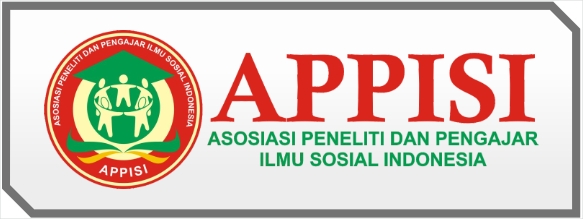The Effect of Intimate Friendship on Self-Disclosure Among Gen Z Users of The Close Friend Feature on Instagram
DOI:
https://doi.org/10.56127/jushpen.v4i1.1986Keywords:
Instagram, self disclosure, close friend, Gen Z, Intimate friendship, Instagram close friendsAbstract
Close friend is an Instagram feature that individuals use to share posts only with a certain group of people. The selection of the close friend list is based on trust and close friendships. Currently, the close friends feature is more widely used by generation Z as a place to do self-disclosure in the form of photos and videos. This study aims to empirically test the effect of intimate friendship on self-disclosure in Gen Z users of the Instagram close friend feature. The sampling technique used in this study was purposive sampling and data analysis using simple linear regression techniques. The sample in this study consisted of 132 Gen Z with an age range of 14-29 years and actively uploading posts about themselves on Instagram close friends. The results of the simple linear regression analysis showed an F value of 57.104 and Sig. <0.001 (p <0.01) with an R square value of 0.305. From these results, the hypothesis is accepted, namely intimate friendship has a very significant effect on self-disclosure in Gen Z and intimate friendship contributes 30.5% to self-disclosure in Gen Z users of the close friendship feature.
References
Arwa. (2021). The relationship between interpersonal trust and self-disclosure of Instagram social media second account users in early adult women. (Thesis, State Islamic University of Maulana Malik, Malang)
Berscheid, E., & Regan, P. (2016). The Psychology of Interpersonal Relationships. Taylor & Francis
Chen, S. S., Lam, T. P., Lam, K.F et. al. (2024). The Use of Close Friends on Instagram, Help-Seeking Willingness, and Suicidality Among Hong Kong Youth: Exploratory Sequential Mixed Methods Study, Journal of medical Internet research, Volume 24
Clark, J., & Green, M. (2017). The social consequences of online interaction. In The oxford handbook of cyberpsychology, pp. 216- 240
Costello, M., Pettit, C., Hellwig, A., Hunt, G., Bailey, N., & Allen, J. (2024). Adolescent social learning supportive within friendships: Self-disclosure and relationship quality from adolescence to adulthood. Journal of Research on Adolescence, pp. 1–13
Dow, B. J and Wood, J.T. (2006). The Sage Handbook of Gender and Communication. California: SAGE Publications
Ernawati, & Suldani, M.(2020). Perubahan perilaku komunikasi kaum perempuan pengguna instagram stories di kota makassar. Kareba: Jurnal Ilmu Komunikasi, Volume 9, 330-340
Farrah, C., Anastasya, Y., & Julistia, R. (2023). Self-disclosure description in adolescent users of the TikTok application. Humanitas, Volume 7, 95-112
Haidir, A (2021). Learning from the case of Adhisty Zara, recognize the negative impacts of oversharing on social media. https://www.celebrities.id/read/belajar-darikasus-adhisty-zara-kenali-dampak-buruk-oversharing-di-media-sosial0uQ0M7
Jati, P.P., & Rahayu, M.N. (2023). Intimate friendship and self-disclosure on early adult instagram second account users. Psychoborneo: Scientific Journal of Psychology, Volume 11, 436-442
Luo, M., & Hancock, J.T. (2019). Self-disclosure and social media: Motivations, mechanisms and psychological well-being. Current Opinion in Psychology, Volume 31, pp. 110-115
Mangundjaya, W. (2022). Psychology of Communication in the Workplace. Pasuruan: Qiara Media
Messner, M. & McMurray-Branscombe, R. (2018). Friendship Leadership. USA: Wipf and Stock Publishers
Nicholson, J. (2015). Intimacy and family communication. In Turner, L. & West, R. (Eds.). The sage handbook of family communication. 107-121, 2015, Sage Publications In
Ogba, K.T.U., Onyishi, I.E., & Chukwuorji, J.C. (2019). Self-disclosure in intimate relationships: Moderating role of online moral foundations. Current Psychology, Volume 40, 1-6
Pohan, P. (2017). The relationship between intimate friendship and self-disclosure in psychology students who use Facebook social media at Medan Area University in the 2013 academic year. (Thesis, Medan Area University, Medan)
PrakashYadav, G & Rai, J. (2017). The generation z and their social media usage: A review and a research outline. Global Journal of Enterprise Information Systems, Volume 9, 111-116
Rakhmawati, Y. (2019). Interpersonal Communication: Concepts and Empirical Studies. Surabaya: Putra Media Nusantara
Riska, N., & Widyastuti. (2019). The relationship between a sense of humor and intimate friendship. Psychoislamedia Psychological Journal, Volume 4, 36-47
Rizal, M., & Rizal, G. (2021). The relationship between intimate friendship and self-disclosure in students using WhatsApp. Jurnal Psikologi Proyeksi, Volume 16, 15-24
Santrock, J.W. (2007). Teenagers (Eleventh Edition). Jakarta: Erlangga Publisher
Sharabany, R. (1994). Intimate friendship scale: Conceptual underpinnings, psychometric properties and construct validity. Journal of Social and Personal Relationships, Volume 11, 449–469
Setiawan, R., & Chan, J. (2022). Effect of close friends instagram stories feature intensity on interpersonal communication intimacy levels. Symposium of Literature, Culture, and Communication (SYLECTION), Volume 1, 1-27
Sultan, M . I . (2020). The effectiveness of using Instagram features in increasing friendships among teenagers at SMA Negeri 1 Maros in the digital era. Avant Garde: Jurnal Komunikasi, Volume 8, 178-190
Sihombing, L., & Aninda, M., (2022). Phenomenology of using instagram close friend features for self-disclosure improvement. Professional: Journal of Communication and Public Administration, Volume 9, 29–34
Syafitri, N., Islamia, I., & Syafrimen. (2021). The relationship between intimate friendship and diversion motives with self-disclosure in students who use instagram." Anfusina: Journal of Psychology, Volume 4, 153-164
Syahrum, & Salim. (2014). Quantitative Research Methodology. Bandung: Citapustaka Media
Ting-Toomey, S., & Dorjee, T. (2019). Communicating Across Cultures: Second Edition. New York: The Guilford Press
Wheeless, L.R., & Grotz, J. (1976). Conceptualization and measurement of reported self-disclosure. Human Communication Research, Volume 2, 338–346
Wijoyo, H., Indrawan, I., Cahyono, Y., Handoko, A.L., & Santamoko, R. (2020). Generation Z and the industrial Revolution 4.0. Purwokerto: Pena Persada.






















